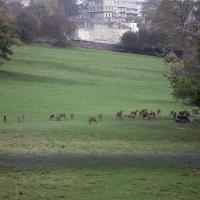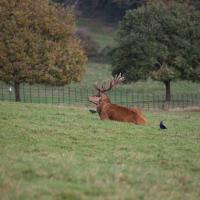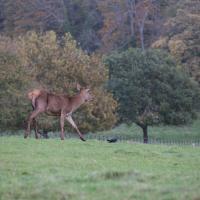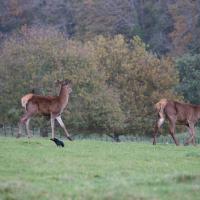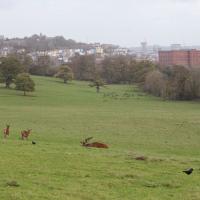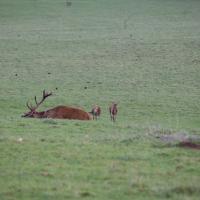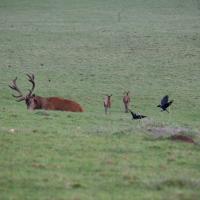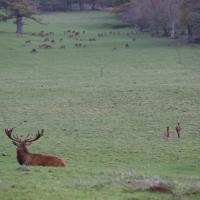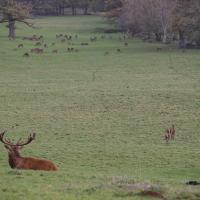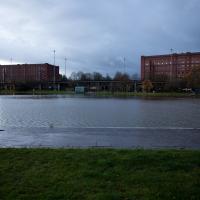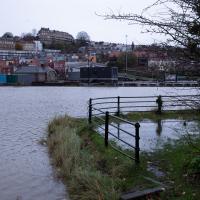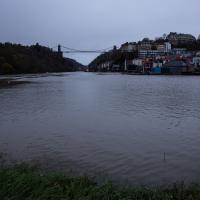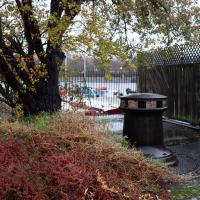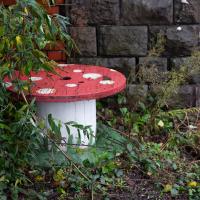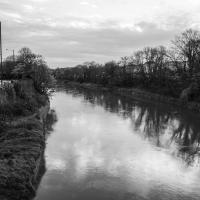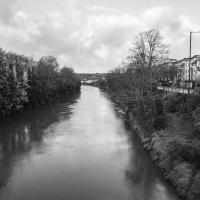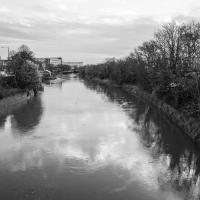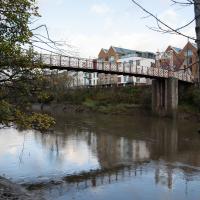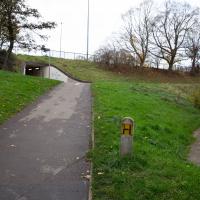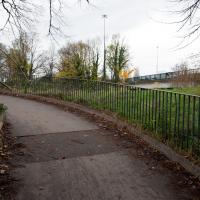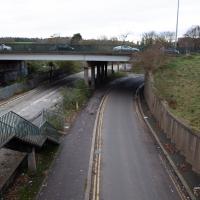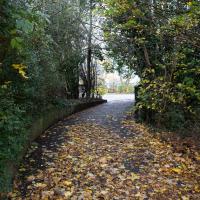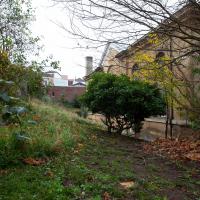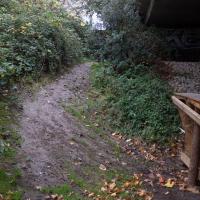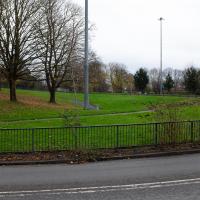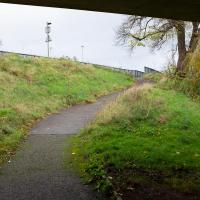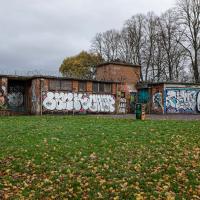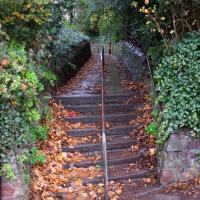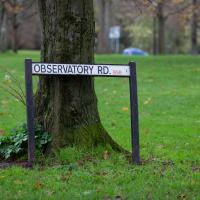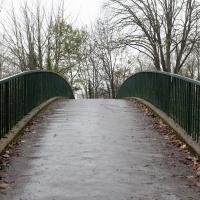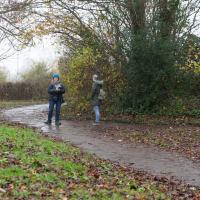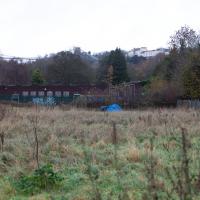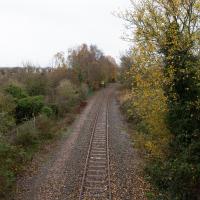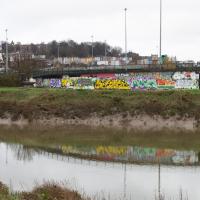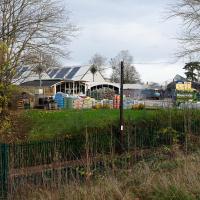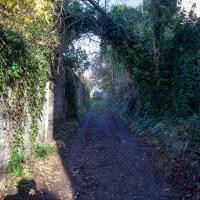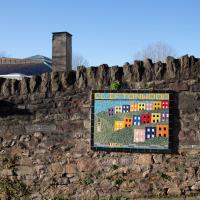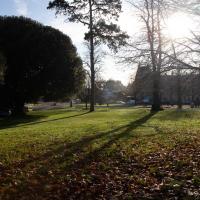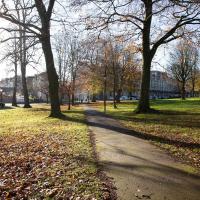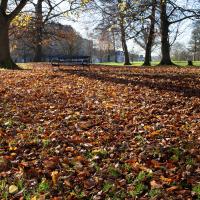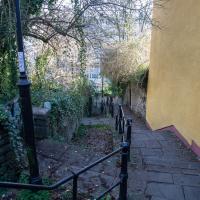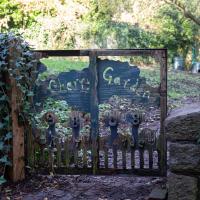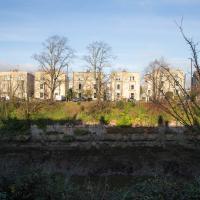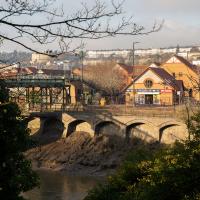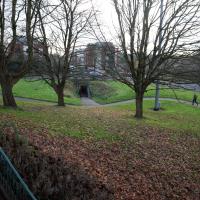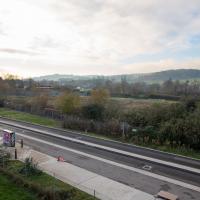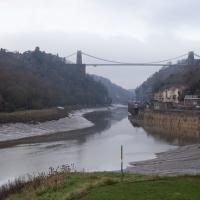Tagged: natural-landscape
Outside the Zone
01 Nov 2020
This started as a little local walk with my friend Lisa, but when we randomly met my friends Sarah and Vik at Ashton Court, turned into joining them for a very long wander out to Abbots Leigh Pool. Most of this was well outside my one-mile radius but it was a lovely walk.
Sunday Morning
15 Nov 2020
My friend Sarah mentioned the high tide and I managed to drag myself out early, though still a little late. We nearly drowned in torrential rain, but the weather changed quickly and we ended up walking over to Bedminster in sunshine.
Not a terribly appropriate title, as it's from Monkey Swallows the Universe's Sheffield Shanty, and we're a long way from Sheffield. Still, the mood of that lovely song does rather fit with the morning.
Sunday Afternoon
15 Nov 2020
A walk back from Bedminster to my place, mostly down Duckmoor Road, which I found a little dull—probably because it reminded me a little of the suburbs I grew up in on the outskirts of London—then held up slightly by some filming on Ashton Avenue Bridge. They were trying not to let the crowds build up too much in between takes, it seems, so it wasn't a long delay.
Dowry Square Jaunt
16 Nov 2020
A quick lunchtime jaunt to Dowry Square, which is very close to me but, being effectively a cul-de-sac as well as a square, I've probably only circumnavigated a couple of times in the last couple of decades.
In which our intrepid hero levels up.
Okay, I successfully reached Greville Smyth the long way round. Of course, there's no coffee van to be found now I'm here. Curses!
Clifton Village Mini Wander
20 Nov 2020
Just a quick wander up the hill to get a flat white from Twelve. I really enjoyed the spooky mannequin (?) in the window.
Bedmo and Ashton Court
21 Nov 2020
A rather more wide-ranging weekend wander with Sarah and Vik, taking in some mock Tudor bits of Bedmo (I should note that I've subsequently been corrected to "Bemmie", but I'm an outsider and have been calling it "Bedmo" for short for decades...), a chunk of Ashton, a path up Rownham Hill called Dead Badger's Bottom(!), The Ashton Court estate, a bit of the UWE campus at Bower Ashton, and some of the Festival Way path.
It looked like there used to also be a sign from the side we came in, but at least finding this a the other end was a reassurance that we weren't trespassing.
I guess someone's living on this patch of ground. I think this used to be where the police horses were stabled. Not sure, though.
If this were an adventure game I'd have to figure out how to get in there and turn the wheel, of course.
I have no idea how anyone managed to smack this street furniture so hard, or what direction they came from to do it. It's a pretty straight 30mph road right there, and this is only one side of the dual carriageway. Never seen so much as a near-miss there.
Avoiding the Accounts
26 Nov 2020
I took the day off my day job to do my accounts—or at least do enough bookkeeping to send them to my accountant. I hate doing the books. I woke up late, tired and with a headache and decided to bunk off for a walk around Cliftonwood, Clifton Village and Clifton instead, taking in a couple of good coffees along the way. Thanks, Foliage Café, and Twelve for the flat whites.
Like several Clifton gardens that feel private, Canynge Square garden is actually owned and maintained by the city council, and is a public garden. Unsurprisingly, perhaps, if you're a casual passer-by, you wouldn't necessarily be able to work this out other than from the lack of the usual "RESIDENTS ONLY" signs that adorn other Clifton gardens.
The Long Lunchtime at the End of the World
27 Nov 2020
I took an extra-long break at lunchtime today as I'd taken the day off my normal day-job to do the accounts for my previous side-job, which is still generating paperwork, though not much in the way of money. This took me through some undiscovered bits of Cliftonwood, including Worlds End Lane, which unexpectedly leads to White Hart Steps. That's certainly not where I expected the end of the world to lead to...
Sobering. A couple of years younger than me, from what I can find on the web he died when his motorcycle was in collision with a car at the nearby corner with Dean Lane.
From what I can work out, the name of Vauxhall Bridge may be derived from the Vauxhall Pleasure Gardens that were, for a while, somewhere in the Dowry Square vicinity, themselves named for the famous London original (as mentioned in Fanny Burney's Evelina, among other books) Not sure what the through line is, though, as the pleasure gardens in Bristol weren't that long-lived, and of course the New Cut is significantly newer, so it's not like there would have been a bridge here back then.
